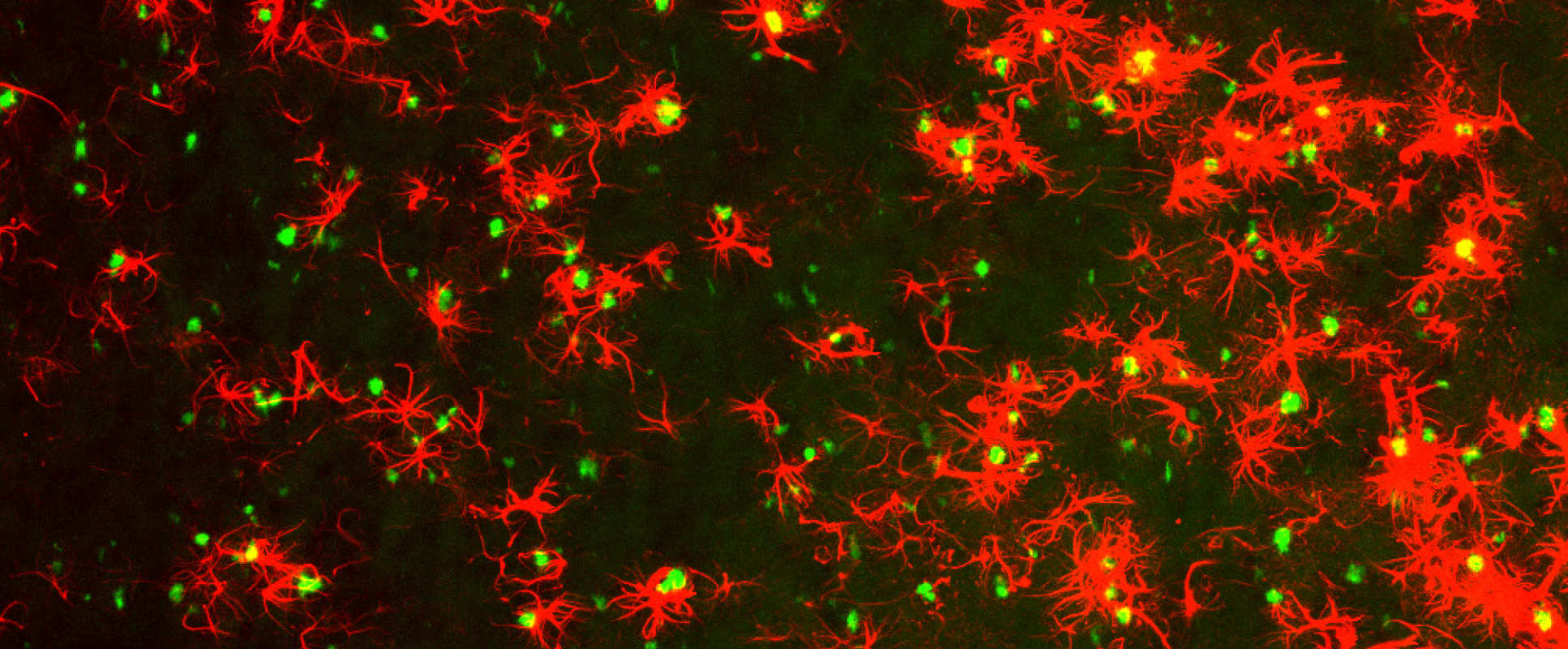
(Image courtesy of Professor Steve Gentleman, Imperial College London)
Microglia play a central role in coordinating homeostatic responses to environmental and neuronal signals. Microglial proliferation and activation are amongst the earliest changes in the progression of neurodegenerative pathologies associated with Alzheimer’s disease (and in other neurodegenerative contexts). An understanding of microglial homeostasis and why it fails in disease promises to play an important role in defining mechanisms of the transition from susceptibility to disease.
Professor Matthews' group is exploring homeostatic roles of microglia with normal aging and the inflammatory neurodegenerative processes of Alzheimer’s disease, asking fundamental questions:
- What molecular changes in microglia are associated with early neuronal network homeostasis and dysfunction?
- What signals between glia and neurons mediate this?
- How does neuronal activity change the microglial phenotype (and vice versa)?
This research is employing a growing range of methods and tools to answer these questions, ranging from ‘omics methods for molecular characterisation of single cells and tissues to in vivo imaging and bioelectronic modulation. The group is working closely with bioinformaticians to integrate these data for an understanding of interactions in the brain—and between the brain and the body- at systems levels, both in preclinical models of Alzheimer’s pathology and in humans. The longer-term goal is to discover and validate novel therapeutic targets for modification of disease.
Key objectives and contact for lead
Key objectives
The key objectives of this research programme are to:
- characterise molecular pathways activated in microglia with early neuronal network dysfunction in preclinical models of amyloid and tau brain pathology and in Alzheimer’s disease
- define chemical signals mediating interactions between glia and neurons at this early stage of pathology
- test for modulation of the microglial phenotype by neuronal activity
Enquiries
Please address enquiries about this programme to:
Personal Assistant to Professor Paul Matthews
Siobhan Dillon
PA-PMM@Imperial.ac.uk
How temperature and circadian rhythms intersect to regulate a protein shown to protect against neurodegeneration
A new study led by Dr Marco Brancaccio (UK DRI at Imperial) and Dr Marieke Hoekstra (former UK DRI at Imperial, now VIB-KU Leuven Center for Brain & Disease Research) offers a deeper insight into how a neuroprotective pathway is regulated both by temperature and the body clock. This research, published in the journal PNAS, could open up new therapeutic avenues for neurodegenerative disease. Read more on the UK DRI website
Introducing Cynthia Sandor: Pioneering earlier detection of Parkinson’s
Dr Cynthia Sandor, former Emerging Leader at the UK DRI at Cardiff, joins the UK DRI at Imperial as a Group Leader, where she will be tackling early diagnosis of Parkinson’s.
With a background in genetics, Dr Sandor uses computational methods to bring greater understanding to the underlying molecular mechanisms of Parkinson’s. Read more about Cynthia's work on the UK DRI website.

